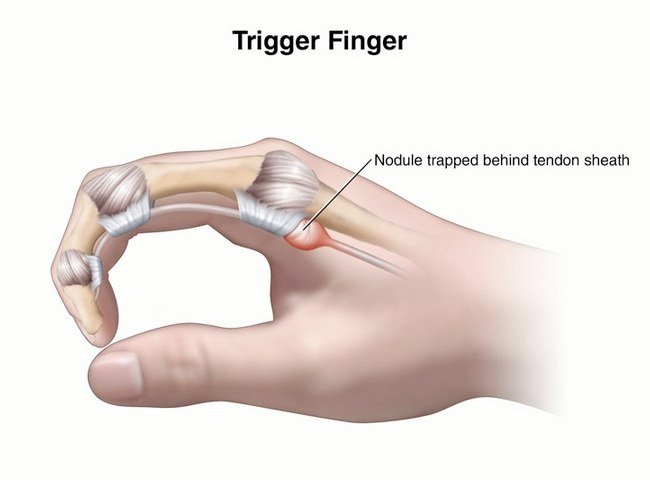Mitigate Pain Clinic – Dr Jeshnu Tople – Pain Management Specialist In Nagpur
Meet Our Doctor

INTERVENTIONAL PAIN AND SPINE SPECIALIST
Dr. Jeshnu Tople
MBBS, DA, DNB, FIAPM, FIPM, FIPP (USA), EDPM (Belgium)
- MBBS from Wardha, Maharashtra
- Diploma in Anaesthesiology from Wardha, Maharashtra
- DNB (Anaesthesiology) from New Delhi
- Fellowship in Pain Management (affiliated to Aesculap Academy, Germany)
- Fellowship of Indian Academy of Pain Medicine from Daradia Pain Hospital, Kolkata
Our Testimonials


Ishan Gadekar

Srujan Topale

Trigger Finger In Nagpur
Trigger Finger Treatment in Nagpur:
Trigger finger, also known as stenosing tenosynovitis, is a common condition that causes your finger to get “stuck” in a bent position, and then suddenly snap straight. This condition can affect one or more fingers and can be both painful and disruptive to your daily activities. If you’re experiencing trigger finger in Nagpur, there are effective treatments available to help relieve your symptoms and restore the smooth function of your hand.
What is Trigger Finger?
Trigger finger occurs when the tendons that control the movement of the fingers become irritated or inflamed. These tendons slide through a protective covering, called a sheath, in the fingers. When the tendon becomes swollen, it cannot slide easily, causing it to “catch” and make the finger stick in a bent position before suddenly straightening. This condition often leads to pain, stiffness, and limited finger movement.
Symptoms of Trigger Finger
Common symptoms of trigger finger include:
- Pain at the base of the finger or thumb
- Stiffness or a feeling of a “lump” at the base of the finger
- Difficulty straightening the finger, with it getting stuck in a bent position
- Popping or clicking sensation when moving the finger
- Swelling around the affected finger joint
- Increased pain when gripping objects
If you are experiencing these symptoms, seeking treatment promptly can help prevent the condition from worsening.
Causes of Trigger Finger
Trigger finger is caused by irritation or inflammation of the tendons in the affected finger or thumb. The following factors can increase the risk of developing trigger finger:
- Repetitive Hand Movements: Activities that involve repetitive gripping or flexing of the fingers, such as typing, texting, or playing instruments.
- Health Conditions: Certain conditions like rheumatoid arthritis, diabetes, or gout can increase the likelihood of developing trigger finger.
- Age: Trigger finger is more common in adults, particularly those between the ages of 40 and 60.
- Gender: Women are more likely to develop trigger finger than men, especially during middle age.
- Trauma or Injury: Previous injury or overuse of the finger joint can contribute to the development of trigger finger.
Effective Treatments for Trigger Finger in Nagpur
If you’re dealing with trigger finger in Nagpur, there are a variety of treatment options available to alleviate pain and restore normal movement.
1. Rest and Activity Modification
One of the first steps in managing trigger finger is to rest the affected finger and avoid activities that involve excessive gripping or repetitive hand motions. This helps reduce inflammation and gives the tendons time to heal.
2. Ice Therapy
Applying ice to the affected area can help reduce swelling and numb the pain. Ice therapy is particularly useful in the early stages of trigger finger, providing immediate relief.
3. Nonsteroidal Anti-Inflammatory Drugs (NSAIDs)
Over-the-counter NSAIDs like ibuprofen or naproxen can help reduce pain and inflammation associated with trigger finger. Consult with a healthcare provider in Nagpur for the right dosage and duration of use.
4. Finger Splints
Wearing a splint can help keep the affected finger in a straight position, reducing strain on the tendon. Splints are especially useful during sleep or while resting.
5. Physical Therapy
A skilled physiotherapist in Nagpur can guide you through gentle exercises to improve flexibility and strengthen the tendons. Stretching and strengthening exercises can help prevent the finger from “catching” and reduce the recurrence of symptoms.
6. Corticosteroid Injections
If conservative treatments do not provide relief, corticosteroid injections may be used to reduce inflammation and ease the pain. Injections are often highly effective and can provide long-lasting relief.
7. Platelet-Rich Plasma (PRP) Therapy
PRP therapy is a cutting-edge treatment that uses a concentrated solution of your own platelets to promote healing of the tendon. This treatment is gaining popularity for managing tendon-related issues like trigger finger and may be available at clinics in Nagpur.
8. Surgical Treatment
If other treatments do not alleviate symptoms, surgery may be necessary. In a simple surgical procedure, the doctor releases the tendon from the sheath, allowing it to move freely again. Surgery is typically a last resort and is only recommended for chronic or severe cases of trigger finger.
Why Choose Trigger Finger Treatment in Nagpur?
Nagpur offers a range of highly skilled orthopedic specialists and hand surgeons who are experienced in treating trigger finger. With access to advanced diagnostic tools and cutting-edge treatments, patients in Nagpur can receive personalized care for their hand and finger conditions. Whether you’re seeking conservative treatments or advanced interventions like PRP therapy or surgery, Nagpur’s healthcare facilities can provide the support you need for a full recovery.
How to Prevent Trigger Finger
While trigger finger may not always be preventable, there are steps you can take to reduce your risk:
- Take Breaks: If you perform repetitive hand movements, make sure to take frequent breaks to rest your fingers and hands.
- Stretching and Strengthening: Incorporating stretching and strengthening exercises into your daily routine can help keep your tendons flexible and strong.
- Use Proper Ergonomics: Ensure that your work environment is ergonomically friendly, particularly if you spend a lot of time typing or using hand tools.
- Wear Protective Gear: If you’re involved in activities that put stress on your fingers, consider using protective gear like padded gloves.
When Should You See a Doctor for Trigger Finger?
If you notice any symptoms of trigger finger, such as pain, stiffness, or difficulty moving your finger, it’s important to seek medical attention. Early treatment can prevent the condition from worsening and improve your chances of a quick recovery. If the pain persists for more than a few weeks or becomes increasingly severe, it’s time to consult with an orthopedic specialist or hand surgeon in Nagpur.
Conclusion
Trigger finger is a treatable condition, and with the right care, you can manage pain, restore mobility, and return to your normal activities. Whether you opt for rest, physical therapy, injections, or surgery, there are effective solutions available in Nagpur to help you overcome trigger finger. Don’t let the discomfort and limitations of trigger finger hold you back—seek treatment today and start your recovery journey.

FAQ's For Trigger Finger In Nagpur
Trigger finger (stenosing tenosynovitis) is a condition where the tendons in your finger become inflamed, causing the finger to get stuck in a bent position and then suddenly snap straight. It often results from repetitive movements.
Trigger finger is caused by the inflammation of the tendon sheaths in the fingers, typically due to repetitive hand movements or overuse. It is more common in people who perform manual tasks or sports that involve gripping.
Symptoms include pain at the base of the affected finger, stiffness, a clicking or snapping sensation when moving the finger, difficulty straightening the finger, and swelling around the affected area.
Yes, trigger finger can affect one or both hands. It may involve multiple fingers, especially if the repetitive activity that caused the condition is done with both hands.
No, while athletes, especially those who grip objects (like tennis players or golfers), are at higher risk, trigger finger can also affect anyone who performs repetitive tasks, such as typing, using tools, or lifting heavy objects.
A healthcare professional diagnoses trigger finger through a physical examination, where they check for symptoms such as pain, stiffness, and catching or popping of the finger. X-rays or ultrasounds may be used in rare cases to rule out other conditions.
Risk factors include repetitive hand movements, occupations requiring gripping, existing medical conditions like diabetes or rheumatoid arthritis, age (commonly affects people between 40-60 years), and gender (more common in women).
Recovery time can vary depending on the severity and treatment method. Many people experience improvement within a few weeks with rest and conservative treatment. Severe cases may take months, especially if surgery is required.
In some mild cases, trigger finger may improve with rest and self-care measures. However, most cases require medical treatment to prevent the condition from getting worse.
Treatment options include rest, ice application, corticosteroid injections, physical therapy, splinting, Platelet-Rich Plasma (PRP) therapy, and surgery for severe cases.
Our Treatments
- Joint Pain
- Back Pain
- Sciatica Pain
- Neck Pain
- Hand Pain
- Shoulder Pain
- Foot & Ankle Pain
- Limb Pain
- CRPS Pain
- Cancer Pain
- Headache
- Hyperhidrosis
- Herpes Zoster Pain
- Chronic Pelvic Pain
- Scar Tenderness
- Postherpetic Neuralgia
- Trigeminal Neuralgia
- Peripheral Neuralgia
- Chronic Vascular Pain
- Generalised Body Pain
- Chronic Injury Pain
- Failed Back Surgery Syndrome
- Chronic Post Surgical Pain
- Other Painful Conditions
- Slipped DISC / PIVD